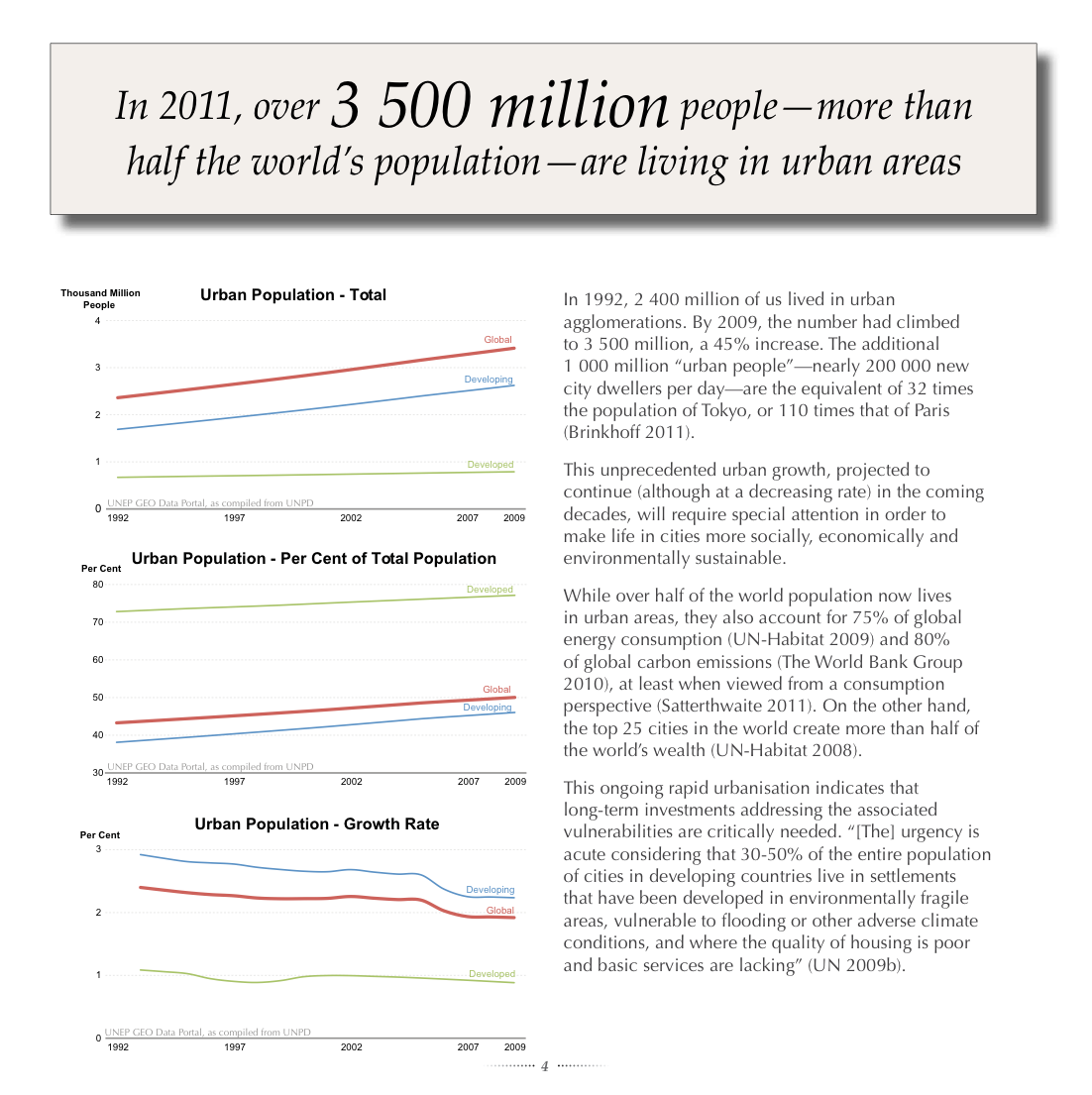resource
Nov. 1 2011
Resource
Urban Population (Keeping Track)
Description
In 2011, over 3 500 million people—more than half the world’s population—are living in urban areasIn 1992, 2 400 million of us lived in urban agglomerations. By 2009, the number had climbed to 3 500 million, a 45% increase. The additional 1 000 million “urban people”—nearly 200 000 new city dwellers per day—are the equivalent of 32 times the population of Tokyo, or 110 times that of Paris (Brinkhoff 2011). This unprecedented urban growth, projected to continue (although at a decreasing rate) in the coming decades, will require special attention in order to make life in cities more socially, economically and environmentally sustainable. While over half of the world population now lives in urban areas, they also account for 75% of global energy consumption (UN-Habitat 2009) and 80% of global carbon emissions (The World Bank Group 2010), at least when viewed from a consumption perspective (Satterthwaite 2011). On the other hand, the top 25 cities in the world create more than half of the world’s wealth (UN-Habitat 2008). This ongoing rapid urbanisation indicates that long-term investments addressing the associated vulnerabilities are critically needed. “[The] urgency is acute considering that 30-50% of the entire population of cities in developing countries live in settlements that have been developed in environmentally fragile areas, vulnerable to flooding or other adverse climate conditions, and where the quality of housing is poor and basic services are lacking” (UN 2009b).
This graphic is part of the publication Keeping Track of Our Changing Environment.
